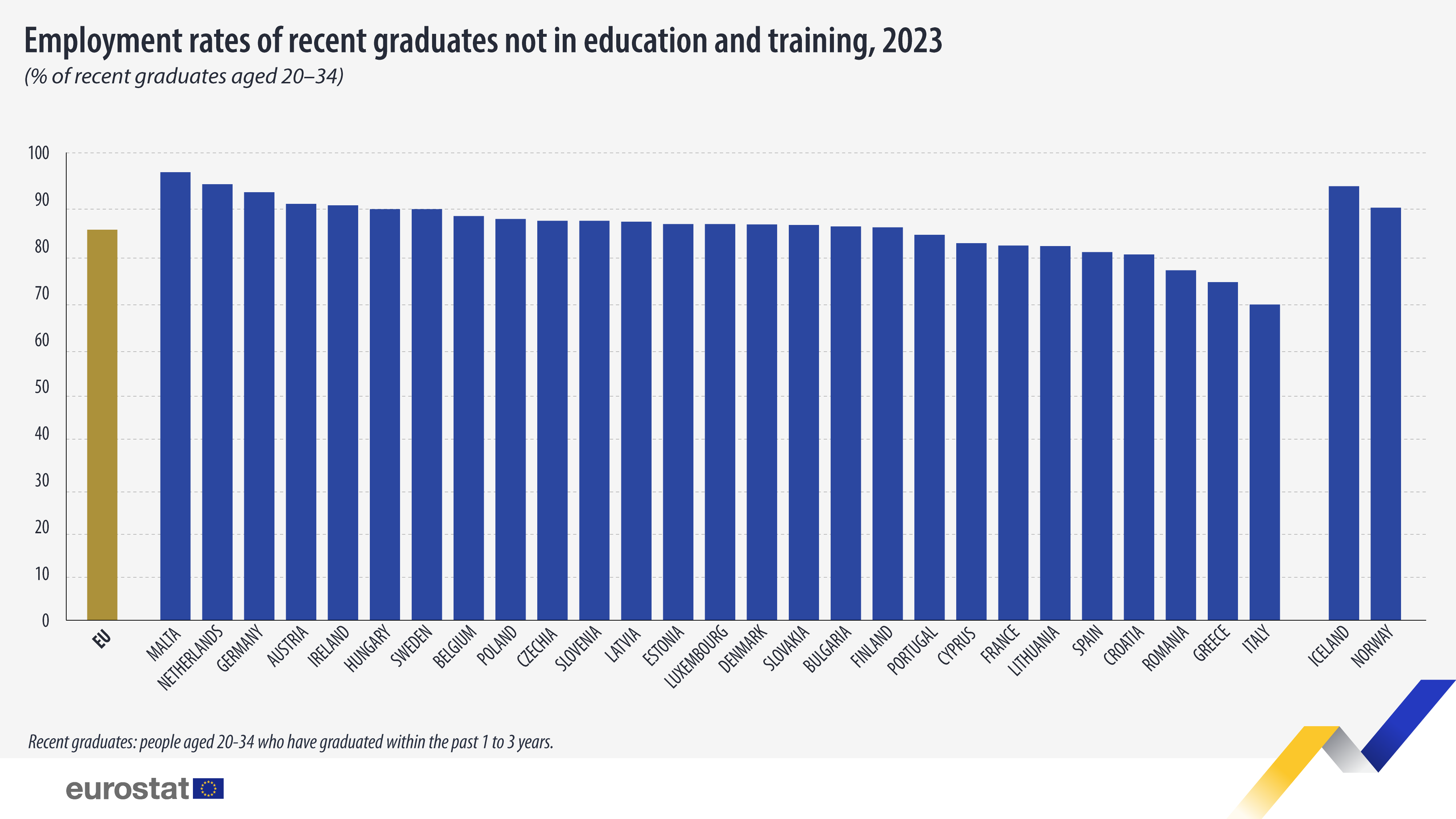83.5% of recent graduates employed in 2023

In 2023, 83.5% of recent graduates in the EU were employed, marking an increase of 1.1 percentage point (pp) compared with 2022 (82.4%). Recent graduates are individuals aged 20-34, who completed their studies within the past 1 to 3 years at medium or tertiary education levels.
Over the past 10 years, there was an increase in the employment rate of recent graduates. In 2013, the rate was 74.3% and has been rising steadily since then. The exception was the pandemic-affected 2020 (78.7%), when a decrease of 2.3 pp was observed compared with 2019 (81.0%).
Source dataset: edat_lfse_24
In 2023, there was a 9.6 pp gap in the employment rate of recent graduates with tertiary educational attainment (87.7%) compared with those with medium education (78.1%).
Highest employment rate of recent graduates in Malta
The overall employment rate of recent graduates was 80% or higher in 22 EU countries. Malta led with 95.8%, followed by the Netherlands (93.2%) and Germany (91.5%).
The lowest employment rates were recorded in Italy (67.5%), Greece (72.3%) and Romania (74.8%).
Source dataset: edat_lfse_24
For more information
- Statistics Explained article on employment rates of recent graduates
- Thematic section on education and training
- Database on education and training
- Thematic section on employment and unemployment (LFS)
- Database on employment and unemployment (LFS)
Methodological notes
- Recent graduates: people aged 20-34, who had graduated within the past 1 to 3 years at upper secondary, post-secondary non-tertiary and tertiary education (International standard classification of education (ISCED) levels 3-8).
- Medium education refers to upper secondary or post-secondary non-tertiary education, ISCED levels 3 and 4, while tertiary education refers to ISCED levels 5-8.
- 2014 and 2021: breaks in series.
If you have any queries, please visit our contact us page.


